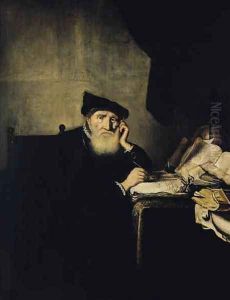Abraham van der Hecke Paintings
Abraham van der Hecke was a Flemish painter and engraver born in 1610 in Antwerp, a city then renowned for its thriving artistic community. His life and career unfolded during the Baroque period, a time characterized by dramatic expression, rich detail, and vibrant colors, all of which are reflected in van der Hecke's work. Despite the prominence of his contemporaries, van der Hecke managed to carve out a niche for himself in the bustling Antwerp art scene.
Van der Hecke was primarily known for his landscapes and genre scenes, although his oeuvre also included historical and biblical subjects. His landscapes often depicted the lush, rolling countryside of Flanders, imbued with a sense of realism and attention to detail that was typical of the Flemish Baroque tradition. These works not only showcased his mastery of light and shadow but also his ability to capture the intricacies of nature and the changing seasons.
In addition to painting, van der Hecke was an accomplished engraver, a skill that allowed him to reproduce his own works as well as those of other artists. This practice was common in the period and helped to disseminate artists' works to a wider audience. Van der Hecke's engravings are noted for their precision and clarity, reflecting his meticulous approach to his craft.
Despite his contributions to the Flemish art scene, Abraham van der Hecke's name is not as widely recognized today as some of his contemporaries. He passed away in 1655 in Antwerp, leaving behind a body of work that, while perhaps not as extensive as some, is valued for its contribution to the Baroque movement in Flanders. His paintings and engravings continue to be studied and appreciated for their beauty and historical value, providing insight into the landscape and genre painting of 17th-century Flanders.
